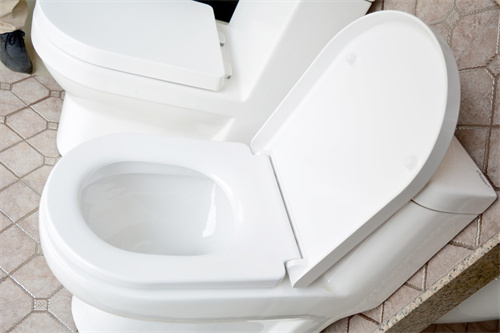A toilet is a typical bathroom fixture, and there are several important issues to consider when setting it up. One common questing is: after setting the toilet, what is the usual space left between the toilet and wall of the lavatory?
First, when setting up a toilet, it’s major to know that the standard space between the toilet and lavatory wall is about 32 to 42 cm.

Out of the standard space, 20 cm will be used with the tiling.
The reason is that most lavatory walls are tiled and liners will need added cement and tiles applied. So if there is no space left, you could possibly have small contact surface between your toilet and wall which may become commercial to deal with, cleaning of the toilet, and/or blockage.
Second, here are a few important points to remember on toilet installations;

1.Before setting the toilet, the first thing to do is remove the existing waste pipe and make sure there are no are dirt, sand, or even paper obstruction in the horizontal and vertical waste pipe. In addition, check if the area is horizontal. If not, you will need to make it horizontal or sort it out. If possible, ensure to create the waste pipe opening to be 2-5 millimetres higher than the floor.
2.Check that the waste pipe is a sealed system. If they are not a sealed system, you may get potential blockages in the future. In addition check that the toilet is of good quality. The sealed surface of the toilet should be smooth and not cracked, regardless of not being damaged and the brand, should be clearly stamped.

3.When selecting a toilet, consideration should be given to the flushing system. There are two toilet types: siphonic and direct flush. The siphonic toilet will account for most toilets made today. The animal waste is removed easily and quickly through a siphoning action. The direct flush toilet has larger channels that allow for bigger items down the toilet; however, the it is notably louder.
4.Toilets are heavy, and they should be installed by two people to minimize damage, from either the toilet or the surrounding plumbing. Any waste pipe has to have proper alignment during the install phase, or afterwards the toilet could leak water! Once the toilet is installed, it is good idea to test the toilet, ensuring that waste flows easily down the toilet and that the toilet flushed properly. In case the toilet has any issues, first follow the instructions in the manual. If the toilet still has issues then contact your dealer for further assistance.

So, in closing this article we have outlined a standard space between the wall and the toilet after install, as well as important ideas to understand about installation and to understand how plumbing fixtures work!
I hope this information is useful to someone who may need it?